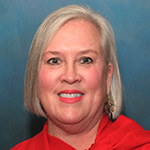Arbor Day is April 29
Trees and Urban Forestry in Kentucky Cities
"Urban forestry” sounds like a contradiction in terms. How can a place be a green space and an urban space at the same time?
Perhaps the closest thing to an actual forest in an urban landscape is New York’s famous Central Park, with 843 acres and more than 20,000 trees. But an urban forest is any green space — trees, grass, shrubs — in public or private spaces. Every city has them. So, where does your city stand in the management of urban forests? And why does it even matter?
“Community forestry applies to cities of all sizes,” said Bridget Abernathy, urban forestry coordinator for the Kentucky Division of Forestry. “An urban forest makes our neighborhoods safer; it makes people shop longer; it makes traffic slow down. There are many reasons to have a more abundant urban forest in our communities.”
She said that a community’s green space is an important indicator of many things, including a city’s overall quality of life. Green infrastructure affects a lot more than the aesthetics of a place.
Abernathy said green spaces make our cities walkable, livable, breathable, and more appealing to potential businesses and residents. To her point, research shows that green spaces increase economic development opportunities and property values.
Most important decisions in cities are based on careful cost and benefit analysis, yet the value of trees and plants is often overlooked. Cities do not specifically list green space expenditures on reports such as Uniform Financial Reports (UFIRs), so it is difficult to determine how much cities collectively spend on green space. It varies among our Kentucky cities.
“We have both science and sociology behind the benefits of community forestry,” Abernathy said.
According to the Center for Urban Horticulture at the University of Washington, urban forests are a significant and increasingly valuable asset.
Eighty-six percent of real estate appraisers surveyed agreed that landscaping added to the dollar value of commercial real estate, and 92 percent agreed it added to sales appeal. Another study that looked at 30 variables of commercial occupancy rates suggested that landscape amenities were more important than direct access to arterial routes.
In terms of residential property values, healthy trees also influence house prices. Trees increase home values from four to six percent on average.
The University of Washington data also points to savings associated with having trees and plants.
For instance, a 25-foot tree can reduce annual heating and cooling costs by eight to 12 percent, and a mature tree canopy reduces air temperature by up to 10 degrees, lowering the internal temperatures of nearby structures.
As you may recall from middle school biology class, trees release oxygen. The average person consumes about 386 pounds of oxygen per year. A healthy 32-foot tree can produce up to 260 pounds of oxygen annually, so two trees can supply the oxygen needs for a person for a year! A mature tree absorbs small particles and gases in air pollution. And street tree canopies absorb rain, reducing the amount of water that will fall on the pavement and wind up in the stormwater drainage system.
So how do you make your city greener without spending a lot of green? Abernathy emphasized that knowledge is power. Having knowledgeable and dedicated people involved with urban forestry planning is key in selecting the right plants and locations.
Another important consideration is who is actually caring for the green stuff. Several cities in Kentucky employ certified arborists. Many more work with arborists on a contractual basis.
Abernathy said working with experts is an important part of the overall health of a city’s urban forest because they have been through specialized training to assess trees and make sound decisions based on tree heath and public safety.
Bowling Green is a great example of a city doing a lot of things right. The city has a list of desirable trees and has updated its tree ordinance to include a list of nuisance trees that cannot be planted in public rights-of-way due to thorns, messy fruits, disease problems, or a high potential for invasiveness.
In Kentucky, several cities currently have tree boards. That is a good place to start if your city wants to implement a strategic, well-thought-out approach to urban forestry. Why be strategic? While good planning is an asset, poor planning is costly and can make matters much worse in terms of tree placement, invasive species, root issues, and even public safety. In some parts of Kentucky, communities work together toward healthy urban forestry.
There are no statutes governing the role of a local tree board. Cities can establish their commission based on their needs. The mayor usually appoints members who serve as a volunteer committee. There are certain steps a city must take to get a tree board started.
The Arbor Day Foundation has helpful information on forming a tree board, including duties, roles and responsibilities, legal structure, budgets, and more. The foundation’s Handbook for Tree Board Members is a great tool.
For sample ordinances regarding tree boards, contact KLC municipal law, one of the Tree City USA® cities, or the Kentucky Division of Forestry.
Abernathy said, “Tree boards represent the trees and the people.” If you already have or choose to start a tree board, it is important to make sure a portion of the board is composed of people with expertise in trees and plants, not just an interest in them.
So, beyond the aesthetic value, the practice of well-planned trees and plants has been proven to benefit economic development, air and water quality, and even public health and wellness in cities of all sizes. Abernathy said building a commitment to a quality urban forest is an ongoing process.
She said protecting trees does not have to be prohibitive, but cities need to consider the implications of new development, water lines, and heritage trees as they look at growth and redevelopment projects. She suggests cities start small with some type of awareness or educational event to gauge local interest in trees and involve the public. Have a community tree planting event or simply celebrate Arbor Day.
There’s ample time to start planning for Arbor Day (April 29), and there are plenty of resources to get started.
Further, there is no use reinventing the wheel. Check out what Kentucky communities with tree boards are doing, or contact the Kentucky Division of Forestry or the Arbor Day Foundation to get rolling.
“Nothing about community forestry should be overwhelming for a city or its staff,” Abernathy said.
“Just start out small and build the public interest. There are lots of great resources, and we’re happy to help cities get started.”


